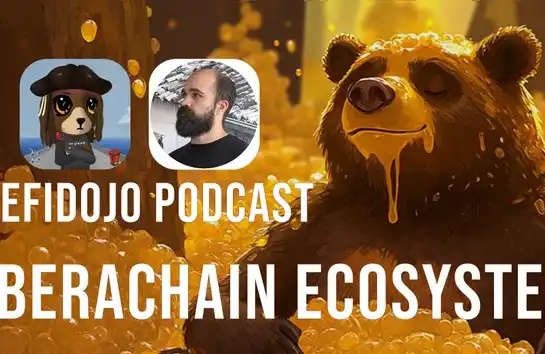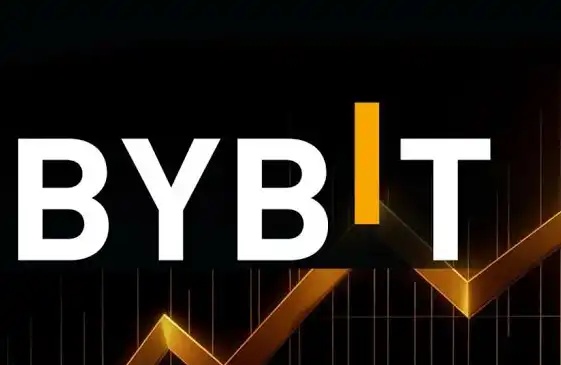Let there be no difficult-to-store information in the world.
Users who are accustomed to surfing the Internet have probably encountered situations where website data is lost.

"404" is a common HTTP status code that is often encountered during web browsing. When you attempt to access a webpage, the server will return a status code to indicate whether the request was successful or not. The "404" status code indicates that the resource you are trying to access was not found on the server.
This may be because:
The webpage has been deleted or moved, but the URL has not been updated.
·There is an error in the URL, causing the server to be unable to find the requested resource.
·Server configuration error.
Compared to relying on centralized services such as Baidu Netdisk and Baidu Snapshot as a last resort, it is the best approach to take care of "perpetual" storage by oneself. After all, the blockchain is permanent, and one's own data cannot be lost.
For ordinary Web3 users, how to find the simplest and most user-friendly way to store text and image materials? This article lists practical decentralized storage products, striving to make more users understand, familiarize and use these products, and achieve Mass Adoption faster in this aspect.
Firstly, the simplest and most primitive method of storage is to upload the converted hexadecimal data to the blockchain during the transfer process.
Satoshi Nakamoto once left a message in the genesis block of Bitcoin, "The Times 03/Jan/2009 Chancellor on brink of second bailout for banks".
This method is not difficult. Taking Ethereum as an example, you only need to use input data in the transfer (the transfer amount can be 0), convert the text you need to record into hexadecimal, and add 0x to the front end.

Output: Hello BlockBeats
But there is a saying that goes "practice makes perfect". If you want to store large files such as web pages and videos, you may need other tools. This article does not discuss the pros and cons of theoretical and underlying protocols, but focuses on practical applications and introduces some products that ordinary users can actually use. Most of the products mentioned in this article have been used and tested by the author. Previously, I also introduced Hologram, which combines NFT with videos and live broadcasts. If you have more interesting products, please feel free to contact me and onboard more real users together.
It is worth noting that the data stored in storage applications can theoretically be accessed by anyone, so do not store confidential files such as passwords in them. If you want to keep your files confidential, encrypt them before uploading. Otherwise, there is a risk of a repeat of the embarrassing incident where a user's private diary uploaded to Mirror was made public.
Save web pages like Baidu snapshot
ArConnect
ArConnect, as a non-custodial wallet for the Arweave protocol, has a basic usage method that is not much different from the well-known MetaMask. However, its built-in Archive Page feature is a web page preservation tool. With just a click, web pages can be saved to Ardrive, providing a simple and effective way to interact with Permaweb applications.

This is an archive of the weekly report for July 31, 2023 on rhythm, presented in a format that is virtually identical to the webpage. The 11-page document is stored in PDF format on Ardrive and can be downloaded.
It is worth noting that, just like using Ethereum with MetaMask, using ArConnect's Archive Page also requires the use of AR tokens. For users who are not familiar with the Arweave network, this may pose some difficulty. However, we can address this issue in the weweave section later in the text.
Archive the Web
Archive the Web is an open and permanent public network archive for everyone. It is built on Arweave as an unrestricted public version, and users can choose to save external links while archiving web pages.

Archive the Web allows different users to choose to archive the same website, forming a time-streamed webpage record. The above image shows the archive of the BBC (British Broadcasting Corporation) official website.
Actually, products like Mirror are already the most successful Web3 products, but recently Mirror's momentum has been gradually replaced by traditional Substack. However, due to the problem of team philosophy, Mirror has been oscillating between protocol and product for a long time, and the WRITE token competition, which was first launched, has also come to nothing. And because of the focus on the protocol layer, Mirror's product is relatively weak, and the author will be constrained when editing the page. Moreover, there is no official data display, and many components mainly rely on community support. As we all know, the storage method used by Mirror for text is Arweave, so let's take a look at what good products IPFS has.
Reference reading: "Mirror's Road Choice: Product or Protocol?"
Planet
Planet is an open-source macOS native app that allows you to directly publish a website or blog from your computer to IPFS. This website or blog can be bound to an ENS domain name (such as .eth). Because IPFS and ENS are both decentralized, the website you publish is also decentralized. Others can follow your latest updates through this app, and your updates can reach your audience directly without relying on a centralized cloud.
·Download and open the Planet client, click the plus sign at the bottom of the main interface to create your own Planet. After creating and writing your first article, your Planet will be published as an IPNS. Right-click on your website in the sidebar and select Copy IPNS. Then you will get a string of IPNS.
·Then you can send this IPNS string to other Planet users, and they can receive updates from you and bind their own ENS.
Meanwhile, Planet can also add RSS feeds on its own, and users who enjoy using RSS can also give it a try.
If you use Planet, I strongly recommend that you read olivida.eth's article. You can appreciate the founder's meticulous polishing of the product, which is rarely seen in the encryption industry with a steady and gentle approach. At the same time, it also allows ordinary people to gain a lot of knowledge about IPFS, such as an introduction to IPFS and Pinning services.
Note: "Pinning" is a concept in IPFS. When a file is "pinned" to a node, it will not be deleted by the node's garbage collector, even if it is no longer referenced by any other files. This makes "pinning" a method to ensure the persistence and accessibility of files.
Reference reading: "Introducing Planet"
xLog
xLog is an open-source on-chain blog community that is accessible to everyone, with a strong emphasis on social features. xLog supports wallet and email connections, allowing users to quickly create custom blogs with features such as custom domains, subscriptions, comments, NFT minting, RSS subscriptions, and AI enhancements.

除了借助于团队自己开发的一条单独侧链外,xLog not only uses IPFS to store content, but also has richer compilation and management tools, supporting more Web2 design and display channels.
Store files like Dropbox and Baidu Cloud. Filebase, web3.storage, and Ardrive
Compared to Arweave, using IPFS protocol is relatively more friendly for beginners who are testing it out, as many IPFS-like products offer free storage space. However, using Arweave requires payment from the start.
There are two points that need to be pointed out. Firstly, the storage limit is based on the total amount of data you upload, not the amount of data you store at any given time. This is because the decentralized storage networks (such as IPFS and Filecoin) used by these services are designed to provide persistent, immutable data storage. This means that once you upload data, it will be permanently stored on the network, even if you later delete the reference to that data.
Web3.Storage
Web3.Storage is a platform that provides simple file storage services for developers. It uses decentralized protocols such as IPFS and Filecoin. Additionally, each user can receive 5GB of free storage space, and users do not need to perform complex operations to access distributed storage.
When you upload files through Web3.Storage, these files will be added to the IPFS network and "pinned" to Web3.Storage's nodes. This means that even if your local node is offline or you are not running your own IPFS node, your files can still be accessed by others on the IPFS network.
In addition, Web3.Storage will also back up your data to the Filecoin network, which is a decentralized storage network that can provide additional data persistence guarantees. This means that your data is not only stored on the IPFS network, but also on the Filecoin network, providing additional redundancy and persistence.

The author uploaded the PDF file of the Archive mentioned in the previous article to Web3.Storage.
Filebase
Filebase provides a simple way to use and leverage decentralized storage networks, making it easier for developers to build and deploy decentralized applications. Filebase also offers an API compatible with Amazon S3, which means that existing S3 tools and libraries can be used to interact with Filebase without the need to learn new APIs or modify existing code.
Meanwhile, Filebase also provides 5GB of free storage space.

Ardrive
ArDrive is a platform based on Arweave that provides permanent storage services. It allows users to store valuable files on a decentralized network. Users need to connect their Arweave wallet and pay a one-time fee to permanently store their data. The files archived using Archive with ArConnect mentioned earlier are displayed in this protocol.

This file link: https://app.ardrive.io/#/file/c4525815-1a84-4145-833b-a65d06412b95/view
Weweave
Due to the difficulty of users needing to use AR tokens and download wallets, users accustomed to the Ethereum ecosystem have a certain threshold for getting started. PermaDAO, a DAO organization focused on the Arweave ecosystem, has built a Weave-based cloud storage product called Weweave.
Its focus is on being able to enjoy Arweave's storage services without having to connect to the Arweave ecosystem. Users can connect their Ethereum wallet and directly use tokens from the Ethereum or BSC chain ecosystem to obtain storage capacity in the Arweave ecosystem.

Keep the website front-end "permanent"
In addition to storing various proprietary information, displaying the website front-end in a decentralized manner is a more advanced way to play.
Combination of Websites and IPFS
Building or backing up a website using IPFS has been mentioned as early as in 2020 during an interview with Wang Chun, co-founder of F2Pool, who stated that stake.fish is based on IPFS. Additionally, Uniswap has been using IPFS for website front-end backup since its V1 version, and this practice has continued through V3 with ongoing updates.

Source: Uniswap's GitHub
Given that the functionality has not been tested by the author, we will first refer to the "Decentralized Uniswap Interface Hosting on IPFS" article from Crust Network to provide a brief introduction to the steps.
Step 1: Build the Uniswap website.
Uniswap is building a website, and all the latest version of Uniswap interface content is included in a Build folder.
Step 2: Upload the website to IPFS.
Uniswap uploads the constructed folder to the IPFS network through Pinata (a way of pinning), so that the file can be retrieved on the IPFS network.
Step 3: Pin to IPFS.
Uniswap Interface is integrated with Pinning services, such as pinata.cloud and Crust Network, to ensure that the Build folder is distributed throughout the network.
Step 4: Update DNS records.
The DNS record of Uniswap interface allows the website to be accessed through a readable URL app.uniswap.org. The DNS record configuration is as follows: a CNAME record for app.uniswap.org with a value of cloudflare-ipfs.com.
The above are simple steps for Uniswap to integrate IPFS. If you need to obtain the latest port of Uniswap, the most accurate way is to go to Uniswap's official channel (such as GitHub) for confirmation.
Combination of Website and Arweave
Similarly, deploying web front-ends similar to Uniswap on Arweave is also feasible. Interested students can refer to this article "Permanently deploy decentralized React frontends to Arweave".

Meanwhile, during the process of searching for information, the author also discovered a Uniswap front-end based on Arweave.
Storage in the Protocol
Not only the above-mentioned products, but also decentralized media platform Glass, where creators and communities can directly interact, is focused on uploading video content to the chain and launching a series of community and financial activities. OurNetwork, a highly reputable on-chain data community, previously uploaded its data analysis course to Glass.
Meanwhile, Lens Protocol, which is highly sought after by airdrop users, also adopts a hybrid approach of decentralized and centralized storage for user data.

Source: Lens Protocol Document
The data of Lens Protocol can be stored in decentralized and immutable solutions (such as IPFS) or centralized services, depending on the use case.
储存的 Mass Adoption 难度在哪里?
The difficulty of storing Mass Adoption lies in where?
Except for user habits, the author learned from Sandy, a developer from everVision who communicates with Arweave, that from the perspective of application development, many data and interfaces at the protocol layer are not very friendly to application development. Moreover, as an application, it is also difficult to obtain funding to sustain development.
The stability of cost, underlying protocols, and data availability may all be problematic. Many application layer products need to build their own system based on previous data. However, many teams capable of doing so will not maintain a widely used practical application, but will turn to "protocols" or "middleware" like Mirror did before, actively promoting their own standards and letting other applications connect.
Just like the current situation with Layer2 protocols, the protocols that receive the most attention and resources are mostly focused on implementing staking and security, as well as data availability. However, when it comes to actual products, they often don't differ much from those in Layer1.
From the perspective of product sustainability, when developing applications on Web3, it is difficult for a product to sustain profitability without introducing tokens under the same circumstances. Products that do not make money are difficult to maintain and update in the long term. This is why we often see many products that are relatively rudimentary, have no continuous operation, or simply fail, either for small team practice or for the sake of usability without considering user experience.
And if tokens are introduced, not only will the product be affected by airdrop hunters, but it may also fall into the same trap as GameFi in the combination of product and token, inevitably leading both the product and token into a "death spiral".
The market is like playing a balancing game, finding the best balance point between investment and actual returns. Looking at the current industry trends, you can see the result: everyone is more inclined to focus on protocols, while attention to applications is relatively less.
欢迎加入律动 BlockBeats 官方社群:
Telegram 订阅群:https://t.me/theblockbeats
Telegram 交流群:https://t.me/BlockBeats_App
Twitter 官方账号:https://twitter.com/BlockBeatsAsia
 Forum
Forum OPRR
OPRR Finance
Finance
 Specials
Specials
 On-chain Eco
On-chain Eco
 Entry
Entry
 Podcasts
Podcasts
 Data
Data


 Summarized by AI
Summarized by AI






